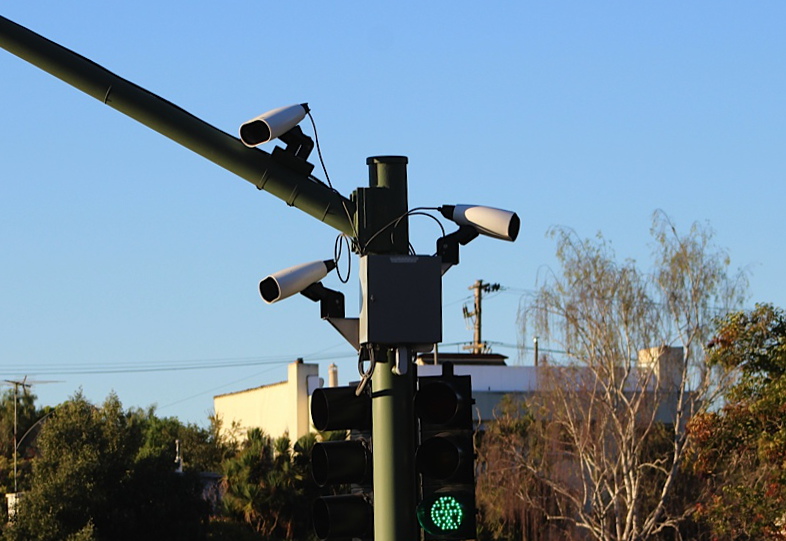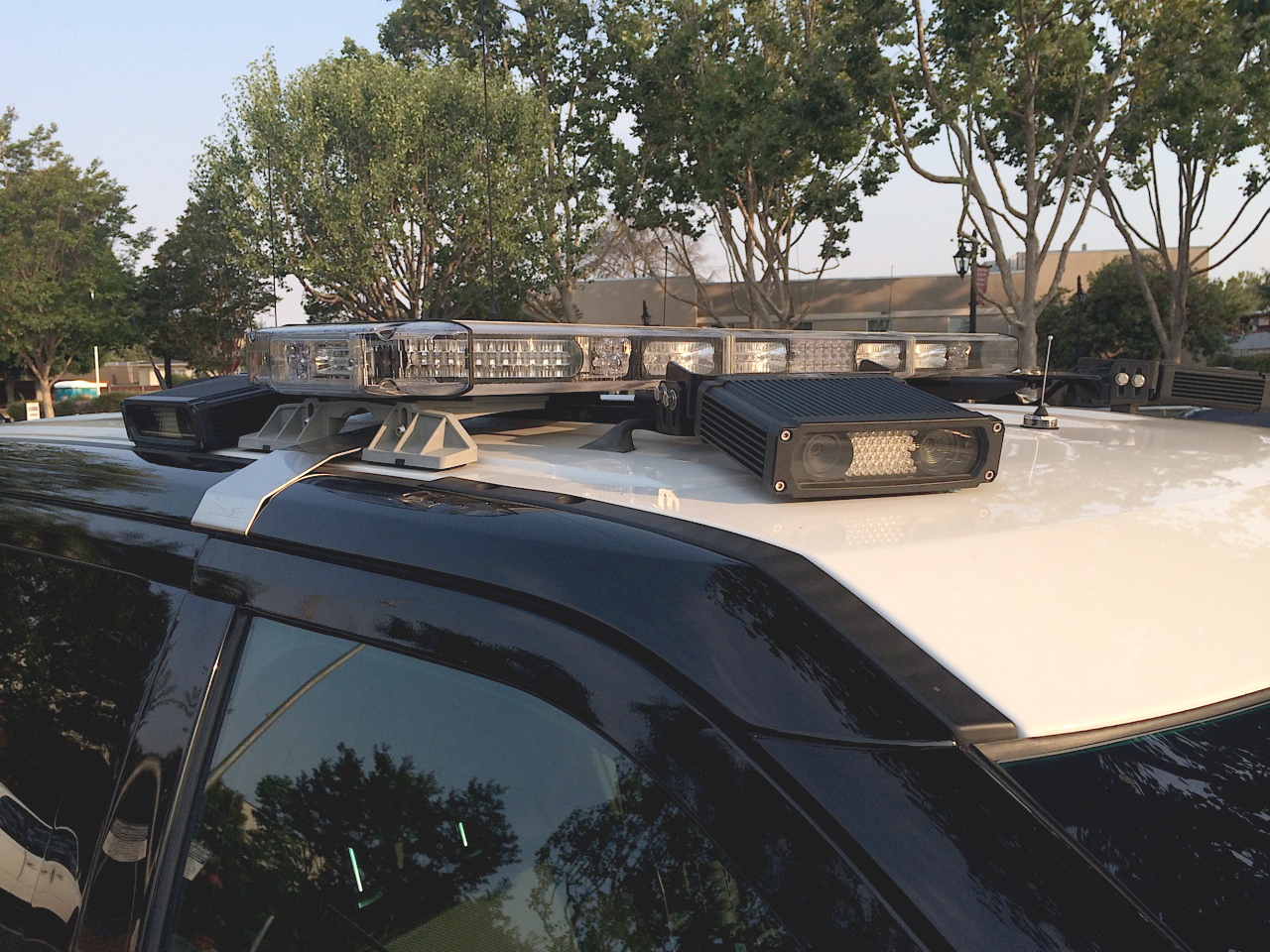Automated License Plate Readers (ALPRs) may be the most common mass surveillance technology in use by local law enforcement around the country—but they're not always used in the same way.
Typically, ALPR systems are comprised of high-speed cameras connected to computers that photograph every license plate that passes. The photo is converted to letters and numbers, which are attached to a time and location stamp, then uploaded to a central server. This allows police to identify and record the locations of vehicles in real time and also identify where those vehicles have been in the past. Using this information, police could establish driving patterns for individual cars. The type of data ALPRs collect, analyze, and access often depends on what kind of systems they use and how they combine the data.
Whether you’re a policymaker, journalist, or a citizen watchdog, it is important to note the specifics about how these technologies are used.
Images courtesy of Mike Katz-Lacabe (CC-BY).
1) Stationary ALPR Cameras

Many law enforcement agencies install ALPR cameras in a fixed location, such as permanently affixing the cameras to traffic lights, telephone polls, or at the entrances of facilities. The city of Paradise Valley, Ariz. even disguises ALPRs at cacti. Often a city or county will attach these on freeway exit ramps to capture the plates of every vehicle entering or leaving. With stationary cameras, law enforcement are able to capture only vehicles passing through that specific location. If cameras are pointed opposite each other, or can be repositioned remotely, law enforcement can know which direction a driver is traveling.
2) Semi-Stationary ALPR Cameras

Some law enforcement agencies acquire truck trailers or special surveillance vans outfitted with ALPR systems that they will tow and place at strategic locations. When parked, they function much like stationary cameras, capturing the plates of moving vehicles that pass within view. For example, law enforcement agencies have placed these vehicles at fairgrounds during high-traffic events like gun shows and political rallies to capture information on attendees and to screen them against existing databases. The big difference is that semi-stationary ALPR cameras can easily be moved to different locations as police feel their surveillance needs change.
3) Mobile ALPR Cameras

Police patrol cars can also be outfitted with ALPR cameras, allowing law enforcement officers to capture and screen plates as they drive along their normal beat or from crime scene to crime scene. Mobile ALPR cameras are also more effective at capturing the license plates of parked cars than stationary or semi-stationary cameras. With mobile ALPRs, officers can drive around a mall parking lot and pick up the plates of everyone shopping at that moment. Of more concern to civil libertarians is the ability for law enforcement to target sensitive places, such as centers of religious worship, health facilities, immigration clinics, union halls, political headquarters, and gun shops. Only two patrol cars in Oakland, for example, were able to cover most of the city in a week of driving around, with a disproportionate amount of coverage in Black and Hispanic neighborhoods.
4) ALPR Databases
A law enforcement agency does not even need to acquire its own ALPR cameras to access ALPR data. Private companies, such as Vigilant Solutions, deploy their own fleet of vehicles equipped with ALPR cameras. The companies then make this data available to law enforcement on a subscription basis. Unlike the other three types of ALPR, this private collection does not include many of the safeguards sometimes found in the government sector, such as transparency requirements, retention limits, and policies approved by an elected body. These four configurations aren't the end of the story.
Overlapping TechnologIes
It is not unusual for a law enforcement agency to deploy multiple flavors of ALPR, such as a combination of mobile and stationary cameras. A large number of agencies that use ALPR also feed data into privately hosted data systems, such as those offered by Vigilant Solutions. This allows agencies to share with one another, but also to draw information collected by the private company itself. Many agencies also share data through a central government system, such as those operated by fusion centers.
Hot Lists
One common practice is for law enforcement to create targeted “hot lists” of vehicles, such as plate numbers of stolen cars or cars suspected of being involved in crimes or gang activity. In some cases, especially in Texas, law enforcement will create a list of individuals with overdue court fees. That way, police receive real time updates when particular vehicles are spotted by an ALPR camera.
Related Technologies
While the above illustrates the four main ways ALPR is used by police, it is important to recognize some of the adjacent technologies. For example, red light cameras and automated speed traps often use ALPR technology. However, they are usually designed to only collect data on suspected violators, not the public at large. Toll roads and bridges also deploy ALPR technologies to make it more convenient to send bills to drivers. In addition, agencies are combining biometric technology with ALPRs, such as facial recognition or the ability to determine whether someone in the carpool lane actually has a passenger. Cities are also installing motion-sensor cameras that capture plates, but do not digitize them, allowing law enforcement to go back and search only after a crime has occurred. However, it is not difficult to apply software to extract license plate data from the images after the fact.
The Devil Is in the Details
When policymakers are considering whether to adopt ALPR technology, it is not a simple yes-no question. Constituents must pressure their representatives on the specifics: will these cameras be mobile or stationary, and does the purchase include access to a third-party database? Policies should specify how long data will be retained, who outside the agency can access the data, and the specific circumstances that allow an officer to search the data or add a vehicle to a hot list. No police chief or elected official should sign off on an ALPR purchase without first answering these questions and balancing them against their constituents’ rights to privacy.
ALPR tech poses a unique threat to privacy because it collects information on everyone, not just those connected to crimes. These systems wouldn’t work at all if the government did not require drivers to post identifying numbers in public view. But unlike an officer writing down plate numbers by hand, the collection and storage on a massive, automated scale can reveal intimate details of our travel patterns that should be none of the government’s business.
For more on ALPR, check out EFF’s Street-Level Surveillance FAQ.











